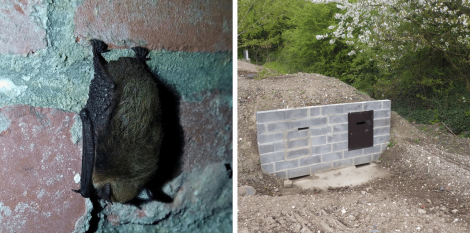On the occasion of the 27th edition of the International Night of the Bat, Guillaume Lemoine, the biodiversity specialist of ECT, sounded an alarm about the fragility of this group of mammals.
Species that live close to humans
Bats are an anthropophilic species, adapted to live in the immediate vicinity of humans. For their life cycles, they reproduce in attics and winter in our cellars.
We must therefore collectively work to improve the wintering conditions of bats. That is why we ask the stakeholders of our developments to equip the artificial cavities identified during field assessments and turn them into wintering roosts for bats whenever that is possible.
Species to be protected during development
This is why ECT pays particular attention to bats while designing and carrying out its projects. We endeavor to limit our impacts, especially during any felling work, by identifying roosting trees.
The compensatory measures proposed and implemented are ambitious: the aim is to provide bats with habitats favorable for breeding, and also hunting corridors. How is that done? Through massive forest plantations and the diversification of afforestation and transition ecotones (hedgerows, meadows, edges).
However, ‘real’ compensatory measures are rare, as the efforts made by ECT mainly relate to avoidance. Our measures are therefore support measures based on the commitment of the company to add high biodiversity value to its developments.
As part of such action, ECT surrounds itself with expert consulting organizations such as the CMNF (Coordination Mammalogique du Nord de la France [Mammalogy Coordination of Northern France] and research firms.
A case in point : the urban forest of the Van Pelt site in Lens
As part of the urban forest project on the Van Pelt site in Lens (62) completed by ECT at the request of EPF Hauts-de-France and local authorities, a first wintering roost was created from scratch in spring 2023.
Let us hope that they will like it and will eventually make it their home.

